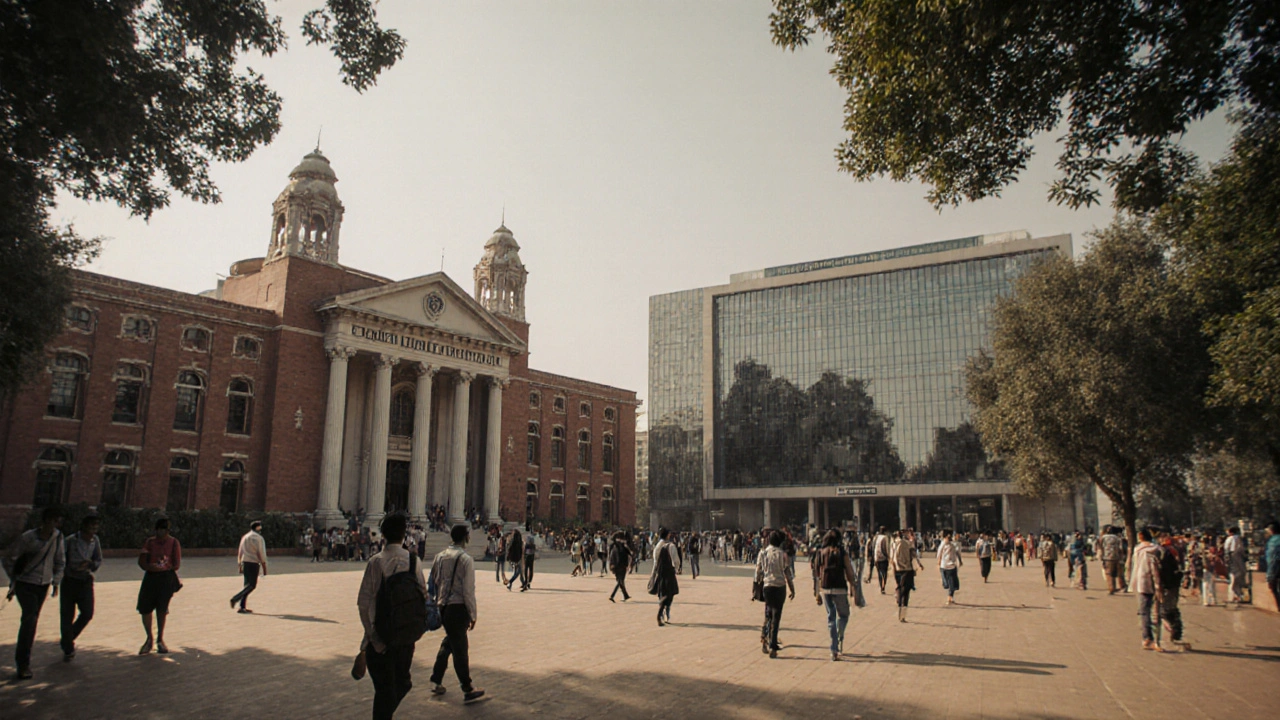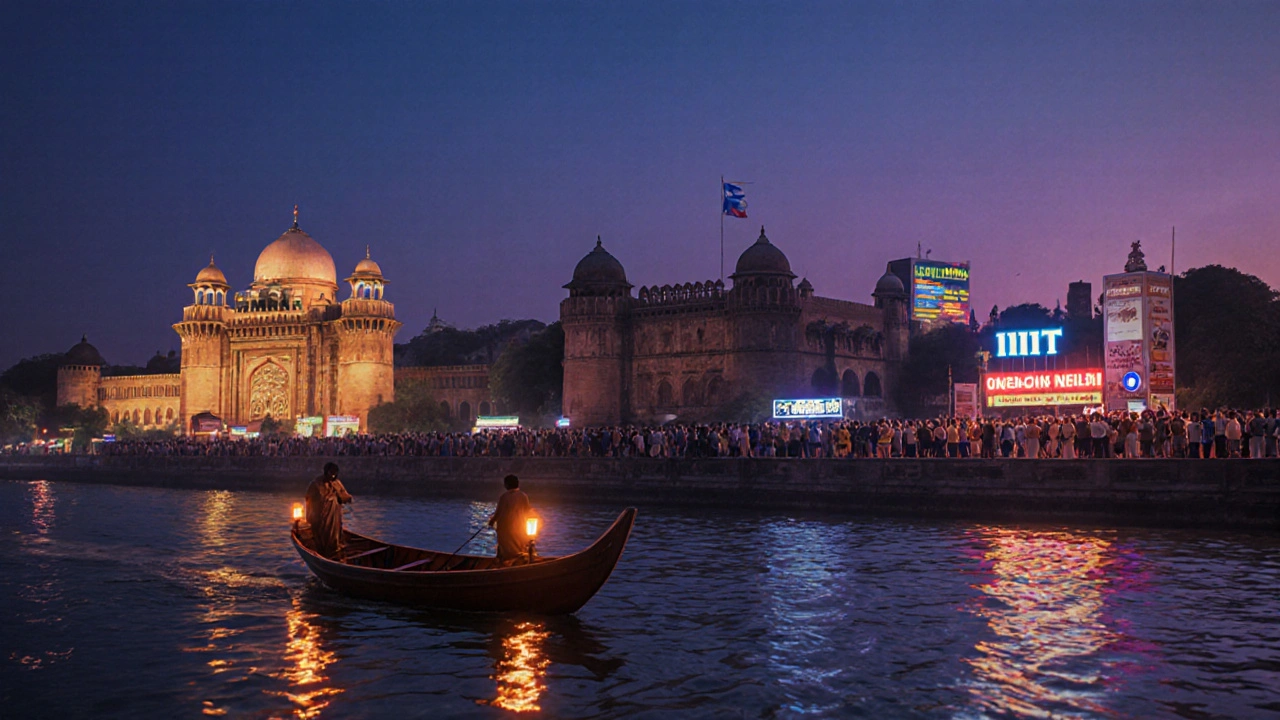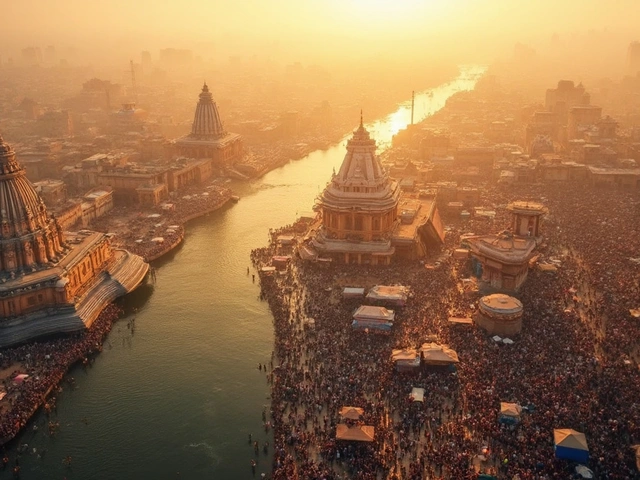Who Is the ‘Boston of India’? Unveiling Prayagraj’s Nickname and Legacy
When you hear the phrase Boston of India, you might picture a tech hub, elite universities, or a city buzzing with intellectual life. In India, that label is often associated with Prayagraj, a place most famous for its ancient pilgrimage sites. But why does a historic river‑bank city get compared to a New England metropolis? This article unpacks the origins, the educational firepower, cultural echoes, and the modern meaning behind the nickname.
Key Takeaways
- Prayagraj earned the "Boston of India" tag because of its cluster of historic universities and research institutes.
- The nickname reflects parallels in education, colonial history, and a spirit of reform.
- While Boston thrives on tech and finance, Prayagraj’s strength lies in humanities, law, and cultural studies.
- Tourists and scholars both benefit from the city’s vibrant festival calendar, especially the Kumbh Mela.
- Understanding the nickname helps appreciate Prayagraj’s role in modern Indian academia and society.
Prayagraj is a historic city in the Indian state of Uttar Pradesh, situated at the confluence of the Ganges, Yamuna and the mythical Saraswati rivers. Known earlier as Allahabad, it has been a cultural and political hub for centuries, hosting the world’s largest religious gathering, the Kumbh Mela. Its modern identity blends ancient pilgrimage with a growing reputation as an educational powerhouse.
How the Nickname Originated
During the British Raj, the city became a center for legal education and civil service training. The University of Allahabad, founded in 1887, drew scholars from across the subcontinent and was dubbed the “Oxford of the East.” As alumni spread into politics and literature, the city’s intellectual climate reminded colonial administrators of Boston’s own Puritan roots and reformist zeal.
In the mid‑20th century, Indian newspapers began using the moniker “Boston of India” to highlight the city’s academic density. A 1953 editorial in The Hindu compared the number of degree‑granting institutions per capita in Prayagraj to that of Boston, noting a similar emphasis on research and liberal arts.
Educational Landscape: The Real Reason Behind the Comparison
Prayagraj hosts several institutions that collectively echo Boston’s university cluster:
- University of Allahabad - often called the “Harvard of the North” for its alumni network and strong humanities programs.
- Indian Institute of Information Technology (IIIT) Allahabad - a newer player focusing on computer science, mirroring MIT’s tech focus.
- Motilal Nehru National Institute of Technology (MNNIT) - engineering excellence comparable to Boston’s technical schools.
- All India Institute of Medical Sciences (AIIMS) Prayagraj - a future medical hub aiming to rival the Boston Medical Center.
- Multiple law colleges and research centers that feed into the Indian judicial system.
These institutions attract students from across India and abroad, creating a vibrant academic community. Like Boston, the city enjoys a steady inflow of conferences, guest lectures, and cultural festivals that keep the intellectual rhythm alive.

Cultural Parallels: More Than Just Academia
Boston’s identity is tied to the American Revolution, a tradition of activism, and a love for sports. Prayagraj mirrors this through:
- Kumbh Mela - a massive gathering that showcases the city’s ability to organize logistics on a global scale, reminiscent of Boston’s marathon and marathon‑level event planning.
- The historic Allahabad Fort and High Court - symbols of legal and administrative reform, akin to Boston’s colonial courts.
- A thriving literary scene, with poets like Harivansh Rai Bachchan shaping modern Hindi literature, just as Boston nurtured the transcendentalists.
- Recreational spaces like the twin bridges over the Ganges, which echo Boston’s Riverwalks and public parks.
While Boston leans heavily on finance and biotechnology, Prayagraj’s strengths lie in humanities, law, and large‑scale event management, giving each city a unique but comparable flavor.
Comparison Table: Prayagraj vs. Boston
| Attribute | Prayagraj (India) | Boston (USA) |
|---|---|---|
| Population (2024) | ≈1.4 million | ≈685 000 |
| Major Universities | University of Allahabad, IIIT Allahabad, MNNIT, AIIMS Prayagraj | Harvard, MIT, Boston University, Northeastern |
| Annual International Events | Kumbh Mela (once every 12 years), literary festivals | Boston Marathon, MIT Tech Fest, Boston Arts Festival |
| Primary Economic Sectors | Education, tourism, government services | Technology, finance, biotech, education |
| Historical Era of Prominence | British colonial period, post‑independence academic reforms | Colonial America, industrial revolution, modern tech era |

What the Nickname Means Today
For locals, being called the "Boston of India" is a badge of pride. It signals that Prayagraj can compete on the world stage for intellectual capital. Young professionals often cite the nickname when choosing a university, viewing the city as a launchpad for national‑level careers.
However, the label also brings expectations: the city must continuously upgrade infrastructure, attract research funding, and nurture startups. Recent initiatives, such as the Prayagraj Smart City project and a new incubation center near IIIT, aim to fulfill those expectations.
Practical Tips for Visitors Interested in the ‘Boston Vibe’
- Plan your trip around the Kumbh Mela or the Allahabad Literature Fest to experience the city’s bustling scholarly atmosphere.
- Take a guided walk through the University of Allahabad campus - the colonial architecture will remind you of Harvard’s red‑brick facades.
- Visit the historic High Court and Allahabad Fort to feel the civic pride that parallels Boston’s Freedom Trail.
- Explore the local tech hub at IIIT Allahabad; many startups showcase their prototypes in weekly demo days.
- Enjoy evening boat rides on the Ganges, a serene counterpart to Boston’s Charles River cruises.
Frequently Asked Questions
Why is Prayagraj compared to Boston?
The comparison stems from Prayagraj’s dense cluster of historic universities, its role in legal and literary reforms, and its ability to host massive events - traits that echo Boston’s academic and civic identity.
Which institutions give Prayagraj its “Boston” reputation?
Key players include the University of Allahabad, IIIT Allahabad, MNNIT, and the upcoming AIIMS Prayagraj. Together they cover humanities, engineering, IT, and medical research.
How does the Kumbh Mela relate to the nickname?
Kumbh Mela showcases the city’s logistical expertise and cultural magnetism, similar to how Boston’s Marathon highlights its organizational capacity and global appeal.
Is the "Boston of India" label officially used by the government?
No official decree exists, but tourism boards and local media frequently employ the phrase to promote Prayagraj’s educational heritage.
Can the nickname help my career if I study in Prayagraj?
Absolutely. Employers recognize the strong alumni network of Prayagraj’s institutions, and the city’s reputation can add a credibility boost on a résumé.






5 Comments
allison berroteran
October 23 2025The nickname 'Boston of India' does more than sound catchy; it encapsulates a centuries‑long tradition of learning in Prayagraj.
From the University of Allahabad's founding in the late 19th century to the recent tech‑focused IIIT, the city has layered institutions like rings on a tree.
Each campus carries its own intellectual DNA, be it the legal scholarship that shaped early Indian bureaucracy or the engineering curricula that fed the nation’s infrastructure boom.
What makes the comparison to Boston compelling is not just the number of schools, but the spirit of reform that both cities championed.
Boston’s Puritan roots gave rise to public discourse, while Prayagraj’s colonial courtrooms cultivated a generation of activist lawyers and writers.
If you stroll through the old Allahabad College quadrangle, you’ll notice Gothic arches that whisper of British academic imports, much like Harvard’s red‑brick silhouette.
Yet the city’s modern skyline, dotted with IT labs and research labs, shows a pivot toward the future without erasing its past.
The Kumbh Mela, though a religious gathering, also demonstrates logistical expertise comparable to Boston’s marathon organization.
Both events attract millions, demand meticulous planning, and leave a cultural imprint on the host city.
Students coming from remote corners of India find in Prayagraj a gateway to national service, much like Boston’s universities funnel graduates into public policy.
Alumni networks from Allahabad still hold sway in the Indian judiciary, echoing how Boston’s graduates dominate American law firms.
The emergence of startup incubators near IIIT mirrors the tech corridors of Cambridge, creating a feedback loop between academia and industry.
When the city announced its Smart City initiatives, the rhetoric was unmistakably about turning an educational hub into an innovation engine.
Comparisons to Boston, however, should not obscure the unique cultural layers that the Ganges, Hindi literature, and historic forts contribute.
In many ways, Prayagraj blends the scholarly rigor of a New England town with the spiritual cadence of an ancient pilgrimage site.
Understanding this duality helps us appreciate why locals wear the nickname like a badge of pride rather than a marketing gimmick.
Gabby Love
November 2 2025Your overview neatly ties together the historical and modern facets; the parallel drawn between the Ganges‑linked festivals and Boston’s marathon is especially clear.
Jen Kay
November 12 2025One could argue that labeling Prayagraj the 'Boston of India' risks oversimplifying a rich tapestry of regional identities, yet the comparison does serve as a convenient shorthand for policymakers.
Michael Thomas
November 22 2025India's academic heritage deserves more global spotlight.
Abert Canada
December 2 2025While the shorthand works for headlines, the lived experience of students navigating both colonial legacies and contemporary challenges adds depth beyond any simple analogy.